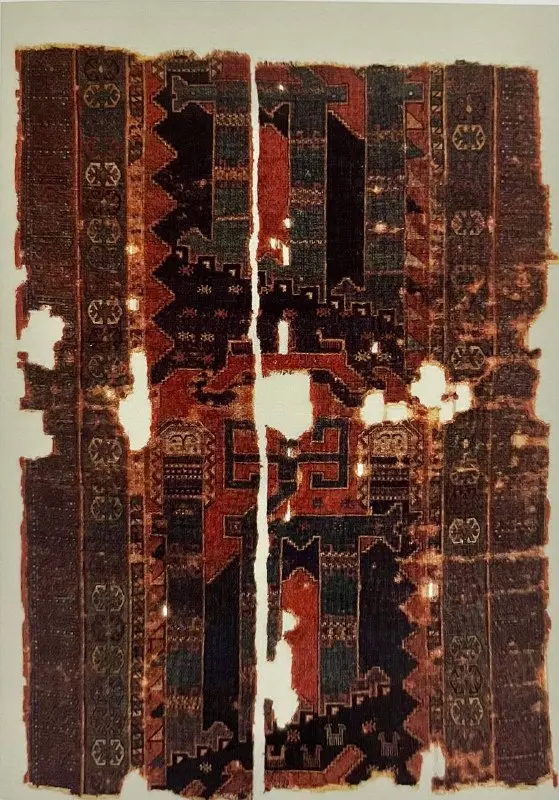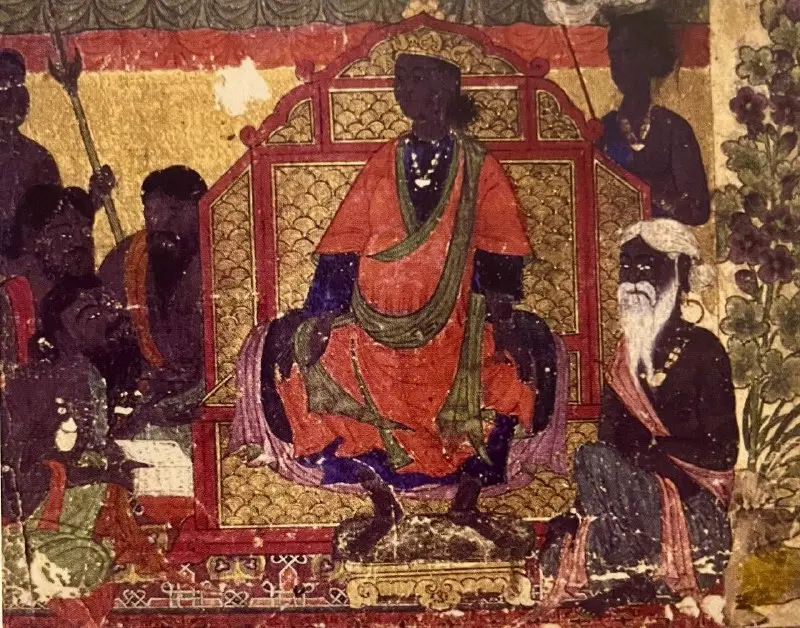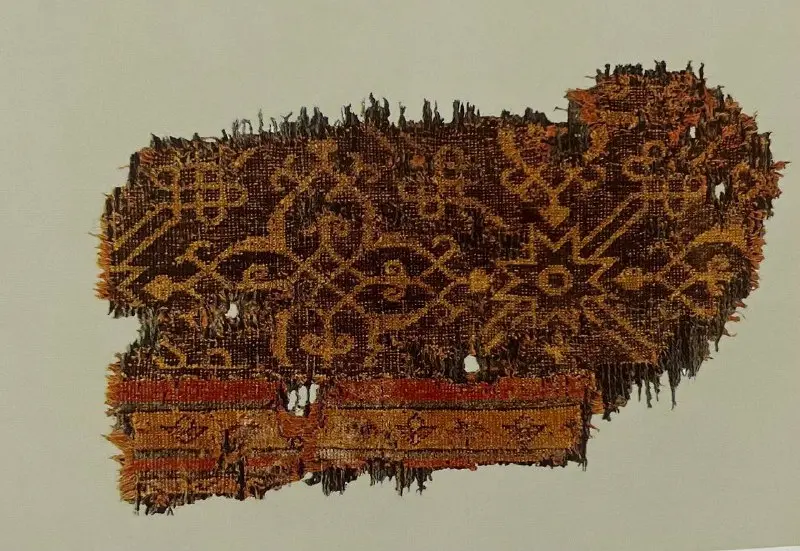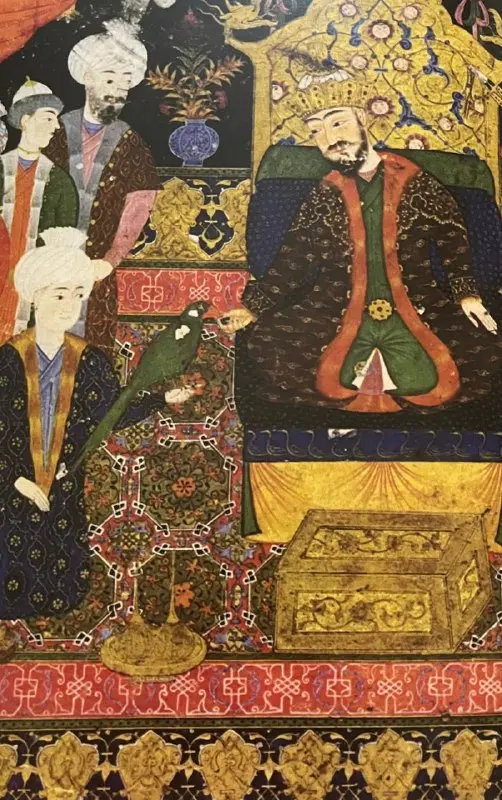Iranian carpets in Safavid era
In Iran like Ottoman Turkey, flourishing of the art of carpet was related to the rise of a powerful kingdom entitled Safavid dynasty that ruled form 1502 to 1736. Iranian carpets in Safavid era
The Safavids took power in Azerbaijan and were considered cultural inheritors of the Timurid court in Tabriz and courts of Koyunlu and Aghkoyunlular.
Renowned Safavid rulers who loved the art summoned thousands of artists such as miniaturists, painters and ceramics makers from around the country to their courts. Their supporting of the art of carpet weaving led to a wonderful development of this art.
Carpets of this era that have been considered the most elegant ones in orient in many aspects were inheritors of many cultures before other cultures and from Turk tribes in fifth century. Mahmud of Ghazni who was originally Turk ordered Ghaz and Khalaj tribes to move to the banks of Caspian and Aral Sea.
A lot of armed Turks gathered around Seljuk Khan and eventually could occupy Ghazni’s areas in 1040 and go toward west and dethrone all Arab Caliphates and establish Seljukian. Hence their territory was from Amo Darya to Damascus.
With Seljukian culture and art reached the shores of the Caspian Sea to Azerbaijan and Azerbaijani art was mixed with art and culture of Arabs. MoGüls attacked to territories of Seljukian in 122 0 that attacked to plateau o Iran and fired it: Ilkans rose on the ruins, and after Timur’s attacks the Timurids replaced them.
Territory of Ilkans acted as a foundation for development of Iranian culture and art; schools of arts were established everywhere that complied native art with employing oriental elements and designs.

They employed designs such as lotus, mallow, sickle leaves and clouds and delivered a new style.
Carpet weaving, adorning and using designs have been recorded by various sources and in miniatures in Iran within Ilkans’ period. Carpets that on them simple polygons with animals can be seen or background decorated with geometric patterns and accurately portrayed Kofi high borders. The designs used in the MoGül period apparently have had a close relationship with their contemporary designs used in the Anatolian car-pets. The Timurids period especially in the Shahrokh’s era ceramic and calligraphy art became common that adorning curved and floral designs were used in that were developed later and attained an advanced lev-el. Technical innovations and the style developed in this period and played a great role in development of the carpet weaving art: for instance, medallion inside another one with different dimensions. Also historians have described Iranian carpet of fourteenth and fifteenth centuries, and there are quotations about weaving and usage of the very carpets by lon Battuta, Moroccan explorer. Ibn Battuta has described the abilities of carpet weaving in Iranian Turkish tribes in 1326 and 1327 and mentioned strange tradition of Lorestan that welcomed their guest by rolling out a green carpet. In the second half of fifteenth century, Venetian globe-trotter, Giosefa Barbaro, who visited palaces of Tabriz, wondered the beauty of carpets in halls. There is a carpet with dimensions 35X56 cm in Benaki Museum in Athens that is known to be wove with wool in fourteenth and fifteenth centuries in Iran. Style of weaving of this carpet is so similar to Iranian weaving style: woolen structure and pile and asymmetrical weaving that is loose in left side and a highly compressed warp.

Remained part is composed of two small borders and a background adorned with a sophisticated design and netted in yellow on a dark background and cross and octagonal stars have been used. Also a part of a carpet with image of Neanderthals has been discovered and is kept in a private collection. This carpet has been probably wove in Azerbaijan in fifteenth century.
Since the second half of the fifteenth century, Turkish dynasties seized power in northwestern Iran and quarrels and conflicts have also occurred, at first Qara Qoyunlu were victorious but in 1465 they had to leave the power to Aq Qoyunlu and new king, Uzun Hasan, selected Tabriz as capital and its close neighbor, Ard-abil, was an important center of religion and origin of Sufism. Some powerful Turkish tribes (such as Qajar, Takalu, Afshar, Romelu), which were dependent of Su-fism, were joined in the fourteenth and fifteenth century and created Qizilbash (Qizilbash means people with red turban).

Qizilbash provided the situation to rise to power of very young Ismail and he established Safavid after empowering that is considered the most significant ruling dynasty in Iran. Despite many battles against Ottomans and Uzbek, Safavid provided economic development in Iran and established firm commercial ties with occidental countries. Iranian ambassadors in European courts brought valuable carpets as gifts that were adorning many royal collections. In 1576 King Tah-masp I transferred capital to Qazvin to be safe from threatens of Ottomans and in 1591 Shah ‹ Abbas I the Great (1587-1629) who was the greatest and most famous king of the Safavid dynasty transferred capital from Qazvin to Isfahan and commanded to build big workshops to weave royal carpets in there. These big workshops were active in all crucial cities: Tabriz, Kashan, Kerman, Yazd, Heart and Jowshegan. Most of the very workshops have been active till now and wove precious carpets.
Innovations of Safavid carpets were using curved designs that capable weaver and specifically a drawing were necessary to make such designs. Royal artists were assigned to create alike designs for carpets, ceramics and miniatures to make a new style and premium feature.
Many sources of that era mentioned this issue and the most important one is “The History of Alam Aray Ab-basi” that was written by the secretary of the court, Eskandar Alexander Big who had been an eyewitness to most of the events or consulted other eyewitness-es. He described carpets with wefts of gold and sil-ver. “Abolfaz!” who was biographer of King Akbar, the most important king of Indian MoGül dynasty, mentioned critical information. In his writings that were related to 1556 and 1605 a lot of important carpets have been mentioned which were imported to India from Kerman, Jowshegan and other parts of Iran such as Khuzestan and Sabzevar by King Akbar.

There are much evidence from notes of diplomats, businessmen and tourists, for instance, Chardin (French) who travelled two times in 1666 and 1672 to Iran wrote a lot about local tradition and artistic and industrial works and delivered lot of information about art of carpet. About a decade later, in 1684, Kaempfer described public halls in Isfahan and admired amazing carpet in there. The very carpets were adorned by floral designs and images of animals that were decorated the floors. Ovington who passed Iran in his travel to Suratt in 1689 confirmed that the richest and most beautiful carpets were wove in Iran around Yazd.
Carpet weaving in Safavid was so various based on many proofs keeping in collections and museums. But among them, we can find mutual technical features, models and adorning designs. Exact time of weaving and exact origin of the very carpets is controversial but there is development by recent studies.
